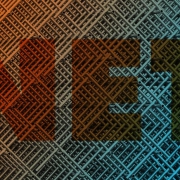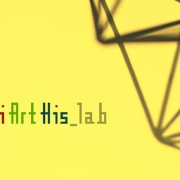Digital culture, social turn and critical perspective in the context of the Digital Humanities
In this post I will discuss other important factors that define the Exhibitium project: its critical and social dimension.
Exhibitium has the general framework to approach the needs identified by the European Union’s digital culture, attending to the call to deploy technology infrastructures, new methods of analysis and at the same time, new ways of generating wealth in accordance with the parameters defined in the Horizon 2020 program. We remember that this program stems from the need to reshape economy and society to adapt to new technological changes, and has as its ultimate goal to achieve inclusive, sustainable and intelligent growth. Within this program, a key element called Digital Agenda (launched in May 2010, although revised in December 2012), is directed specifically to promote the full integration of cultural institutions in the digital age and seek new models generating wealth and development. In this regard, the recommendation of the 2011 EU, that remains integrated into the Digital Agenda, insists this: «Europe must urgently intervene to obtain the benefits of digitisation». If the member States don’t increase investment in this field, there exists the risk that the cultural and economic benefits of the digital change will materialise on other continents, but not in Europe […] The digitisation of cultural resources and the expanding access to these, offers enormous economic opportunities and is an essential condition for the further development of cultural and creative capacities in Europe and the presence of its industry in this field.
Exhibitium falls within the framework of these objectives,as part of its purpose is to make digital information accessible and reusable from multiple perspectives relative to art exhibitions, further generating new knowledge that can be reused for multiple purposes.
Now, this commitment of the European Union and the Horizon 2020 program toward an authentic social turn is closely related to a critical approach in the development of digital culture and in our particular case, to digital processes associated with artistic culture. In this context, spurred on by critical thinking and cultural criticism from a couple years ago, the result has been a new consolidated «Digital Humanities Review». This trend has raised an urgent need to review the established power structures as well as the new ones that are emerging and consolidating in the digital processes of production of meaning, knowledge building and establishment of socio-cultural dynamics (Lothian and Phillips, 2013; Dacos, 2013; Galina, 2013; Fiormonte, 2012; Liu, 2012; Higgin, 2010, GrandJean (2014), Rodríguez Ortega (2014), among others). Thus, the field of Digitial Humanities is fully aware that there is a real risk of perpetuating the same problems in the digital world and in the practice of academic digital research, of marginalisation and subordination that characterised our «pre-digital» world. A risk materialises that in the sphere of artistic culture, among other things, a greater or lesser digital presence of certain artistic and cultural content; and additionally, a greater or lesser capacity of digital performance of cultural institutions.
The Critical Digital Humanities impel us therefore to think about which new marginalities are emerging as a result of digital development; how they affect the cultural process, the process of production and distribution of knowledge; and at the same time, develop tools and strategies that besides these visible marginalities, contribute to balance, using the potential of digital technology precisely and the «empowerment» possibilities they offer. Therefore, it is for this reason that the Critical Digital Humanities should also intervene in some Social Digital Humanities that intersect with Public Humanities (Belfiore and Upchurch, 2013).
Exhibitium proposes a firm commitment toward that new horizon to combine the process of producing highly specialised digital knowledge with others that are oriented toward society and are inclined to create social, cultural and territorial balance. Thus, one of the accomplishments of this project will be the GeoWave Exhibitions site, which has a clear vocation of socialisation produced from cultural content. In this regard, we believe that Exhibitium will have the potential to balance certain «digital» inequalities, to the extent that will make feasible visiblity of all registered temporary exhibitions at the same level, regardless of their geographic location and the nature or media power of the organising centers. This means that Exhibitium can literally put exhibitions limited to a secondary context when not marginal, that still have interest and historic-artistic, academic-scientific and museographic quality, on the map. In addition, it will reveal the existing imbalance between the cultural institutions as to what presence and digital relevance refers, specifying which parameters influence these imbalances and which areas are affected.
Previous research by iArtHis_Lab showed the obvious imbalance existing between large metropolitan centres and small local centres in the autonomous community of Andalucía. Among the preliminary results we obtained the following thermal map: as can be seen, the «hot» centres coincide with the provincial capitals, the nuclear centre of the most important cultural institutions, whereas in their surrounding areas a clear periphery emerges characterised by a precarious and ineffective digital presence, independent of heritage or cultural interest that the surveyed centers may have (Cruces and Polo, 2013). If we examine this perspective from the point of view of the dynamics of cultural tourism, it is clear that in one region where much of its GDP comes from tourism, this situation contributes to establishing unequal economic and social developments in the area.
Nuria Rodríguez Ortega
References cited
Belfiore, Eleonora and Upchurch, Anna (2013), Humanities in the Twenty-First Century: Beyond Utility and Markets, Palgrave Macmillan.
Cruces Rodríguez, Antonio y Tenor Polo, Carmen (2013), «Análisis de la presencia de los museos andaluces en la Red. Consideraciones», en Historia del Arte, computación y medios digitales en España. ¿Dónde estamos, hacia dónde vamos?, III Workshop Internacional sobre Historia del Arte Digital, Universidad de Málaga, Málaga, 20-22 de junio de 2013. En: http://historiadelartemalaga.es/seminarios/workshop/#home
Dacos, Marin (2013), «La stratégie du Sauna finlandais», in Blogo Numericus, mayo 2013. Disponible en: http://blog.homo-numericus.net/article11138.html.
Fiormonte, Domenico (2012), «Towards a Cultural Critique of Digital Humanities», Historical Social Research – Historische Sozialforschung, Special Issue, no. 141, HSR vol.37 (2), pp. 59-76. Disponible en: http://www.cceh.uni-koeln.de/files/Fiormonte_final.pdf.
Galina, Isabel (2013), «Is There Anybody Out There? Building a global Digital Humanities community». Keynote speech. Digital Humanities Annual Conference, Nebraska (EE.UU). Disponible en: http://humanidadesdigitales.net/blog/2013/07/19/is-there-anybody-out-there-building-a-global-digital-humanities-community/
Higgin, Tanner (2010), «Cultural Politics, Critique and Digital Humanities», en Gaming the System, 25 mayo de 2010. Disponible en: http://www.tannerhiggin.com/cultural-politics-critique-and-the-digital-humanities/.
Liu, Alan (2012), «What is Cultural Criticism in the Digital Humanities?», en Mathew K. Gold (ed.), Debates in the Digital Humanities, University of Minnesota Press. Disponible en: http://dhdebates.gc.cuny.edu/debates/text/20.
Lothian, Alexis and Amanda Phillips (2013), «Can Digital Humanities Mean Transformative Critique», Journal of E-Media Studies, 3.1.
Rodríguez Ortega, Nuria (2014), «Humanidades Digitales y Pensamiento crítico», en Esteban Romero Frías y María Sánchez, Ciencias Sociales y Humanidades Digitales Técnicas, herramientas y experiencias de e-Research e investigación en colaboración, CAC, Cuadernos Artesanos de Comunicación, 61. Disponible en: http://www.cuadernosartesanos.org/2014/cac61.pdf




